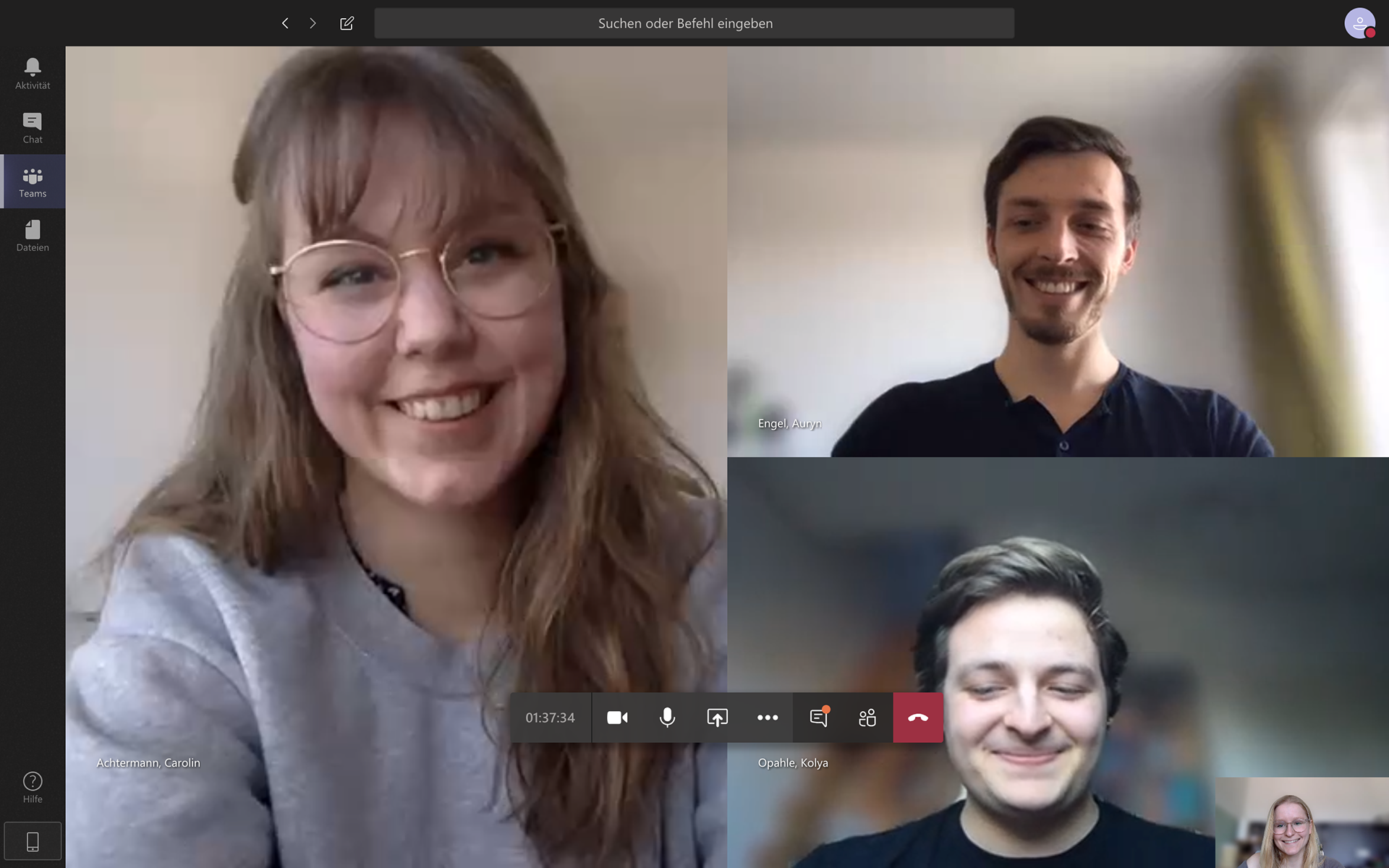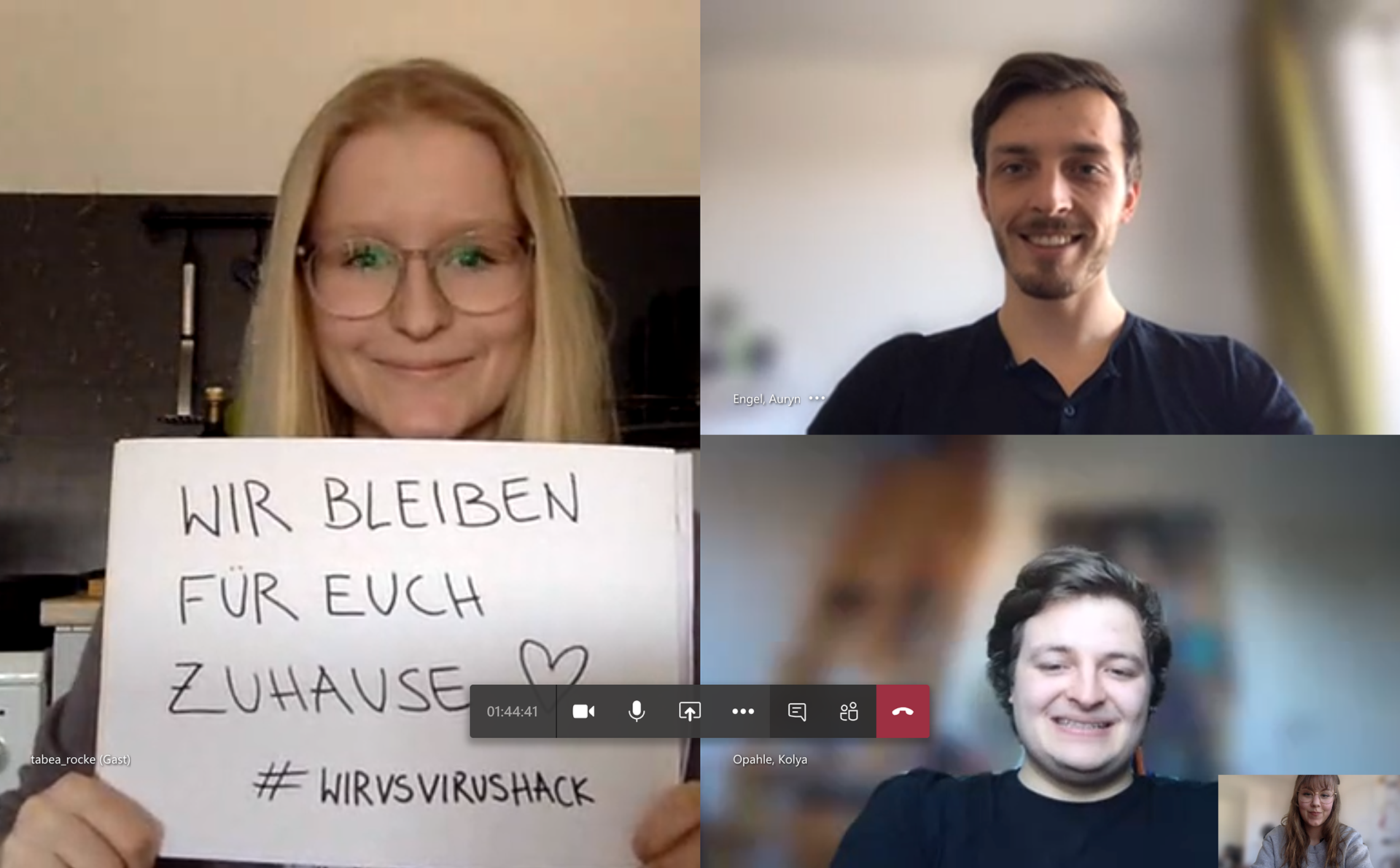Personal Projekt #WirvsVirusHack
Year 2020
Tasks My focus was on optimizing the user flow in the app, the style of icons, producing the demo video and filling out forms / documentation for the hackathon.
Team Auryn Engel, Kolya Ophale, Tabea Rocke
We spent a long time dealing with the variety of topics and decided to build a neighborhood app with a gamification part. Young people and teenagers in particular may need an encouragement to help their neighbors. And what could be better suited than toilet paper? Digital toilet paper! In the current situation, it is particularly important to be careful, which is why the onboarding section of the app briefly and clearly explains which health aspects should be considered when helping. By rewarding with virtual toilet paper, noodles etc. we want to face the whole situation with hoarding (or hamstering, as we in german say – that is why the logo is a hamster) with humour and take the hoarding a little bit for a ride.
ABOUT THE APP
Users can register and see their immediate surroundings on a map. They can either post a request for help themselves or look up who needs help from their neighbors and offer help. Further information about the task is communicated via a chat. When everything is done, the task is confirmed by the person requesting help in the app and the helper receives a reward in the form of virtual toilet paper, pasta, etc. which is then stores in a virtual cupboard.
PERSONAS
As personas we have chosen two people who are supposed to represent the average german. In general we differ between two groups of personas : On the one hand those who isolate themselves at home, can't go out and therefore need help. On the other hand those who are young and healthy and can help others.
CHALLENGE: FINDING THE BALANCE
The most difficult task in developing the project was to find a good balance between good community help with a play factor and to communicate the importance of quarantine and social distance. We are aware that the app could encourage more interaction between people, that is why we first put all hygienic rules in the onboarding before logging into the app. Second there is a yellow box on top of every task with a note to stay save and healthy while helping.
TEAMWORK
The unusual thing about working in a team at a only digital hackathon was, that we could only meet, talk and co-work online for two days. Our team had two designers and two developers.
We designers worked parallel in Figma, where I was more responsible for the screens and the prototype. Via an ongoing call (10 hours every day) we always communicated live with the developers about which design was best to implement and what we had to change. The application was developed in Flutter. Flutter is a cross platform framework from Google. Therefore we can roll out the application for iOS as well as Android. For the backend we use Firebase. This is used for login and registration by email and password. Furthermore the chat data, the position data and the help requests are automatically synchronized and distributed to all backends via Firebase. This enables us to have the data live on all devices without having to develop a dedicated backend. The project is on GitHub and also on Devpost. There is also an interesting article written by one of our team members about his experiences from this project called "5 Learnings from the #wirvsvirushack from a developer perspective" on medium.


DEMOVIDEO
To present the concept and the app prototype we made a video – because the hackathon was in german, the app only contains german text.